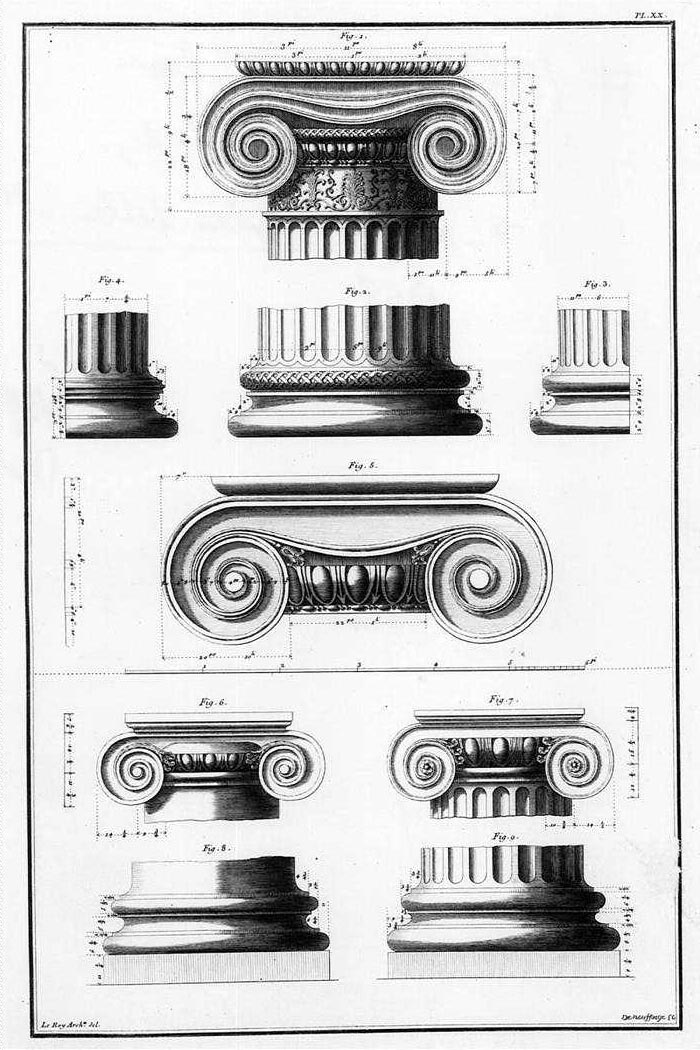|
Van Swearingen-Shepherd House
The Van Swearingen-Shepherd House, also known as Bellevue, is a Colonial Revival mansion in Shepherdstown, West Virginia that is home to the descendants of Captain Thomas Shepherd, founder of Shepherdstown. The house, situated on a bluff overlooking the Potomac River, was built in 1773 by Thomas Van Swearingen as a single-story stone house. His son, also named Thomas Van Swearingen, was a US Representative. The Shepherd family acquired the house in 1900, when Henry Shepherd III bought the house as a wedding present for his bride Minnie Reinhart, whose grandfather was Thomas Van Swearingen. That year, the Shepherds gave a dinner party on the lawn for William Jennings Bryan during his second presidential campaign. The house remains in the hands of the Shepherd family. The original stone house has been extensively altered, with brick Victorian-era alterations exchanged for the present Colonial Revival style with a tetrastyle A portico is a porch leading to the entrance ... [...More Info...] [...Related Items...] OR: [Wikipedia] [Google] [Baidu] |
Shepherdstown, West Virginia
Shepherdstown is a town in Jefferson County, West Virginia, United States, located in the lower Shenandoah Valley along the Potomac River. Home to Shepherd University, the town's population was 1,734 at the time of the 2010 census. History 18th century Established on December 23, 1762, by consecutive acts passed by the Virginia House of Burgesses and approved by the governor, Mecklenburg (later renamed Shepherdstown), and Romney in Hampshire County are the oldest towns in West Virginia. On a list of more than 30 approved "publick and private bills" of that date, the bill containing ''An Act for establishing the town of Mecklenburg, in the county of Frederick'' immediately follows ''An act for establishing the town of Romney, in the county of Hampshire, and for other purposes therein-mentioned.'' The first British colonial settlers began their migration into the northern end of the Shenandoah Valley in the early 18th century. Many crossed the Potowmack (now spelled Pot ... [...More Info...] [...Related Items...] OR: [Wikipedia] [Google] [Baidu] |
Colonial Revival
The Colonial Revival architectural style seeks to revive elements of American colonial architecture. The beginnings of the Colonial Revival style are often attributed to the Centennial Exhibition of 1876, which reawakened Americans to the architectural traditions of their colonial past. Fairly small numbers of Colonial Revival homes were built c. 1880–1910, a period when Queen Anne-style architecture was dominant in the United States. From 1910–1930, the Colonial Revival movement was ascendant, with about 40% of U.S. homes built during this period in the Colonial Revival style. In the immediate post-war period (c. 1950s–early 1960s), Colonial Revival homes continued to be constructed, but in simplified form. In the present-day, many New Traditional homes draw from Colonial Revival styles. While the dominant influences in Colonial Revival style are Georgian and Federal architecture, Colonial Revival homes also draw, to a lesser extent, from the Dutch Colonial ... [...More Info...] [...Related Items...] OR: [Wikipedia] [Google] [Baidu] |
Potomac River
The Potomac River () drains the Mid-Atlantic (United States), Mid-Atlantic United States, flowing from the Potomac Highlands of West Virginia, Potomac Highlands into Chesapeake Bay. It is long,U.S. Geological Survey. National Hydrography Dataset high-resolution flowline dataThe National Map. Retrieved August 15, 2011 with a Drainage basin, drainage area of 14,700 square miles (38,000 km2), and is the fourth-largest river along the East Coast of the United States and the 21st-largest in the United States. Over 5 million people live within its drainage basin, watershed. The river forms part of the borders between Maryland and Washington, D.C. on the left descending bank and between West Virginia and Virginia on the right descending bank. Except for a small portion of its headwaters in West Virginia, the #North Branch Potomac River, North Branch Potomac River is considered part of Maryland to the low-water mark on the opposite bank. The South Branch Potomac River lies comple ... [...More Info...] [...Related Items...] OR: [Wikipedia] [Google] [Baidu] |
Thomas Van Swearingen
Thomas Van Swearingen (May 5, 1784 – August 19, 1822) was a U.S. Representative from Virginia. Biography Born near Shepherdstown, Virginia (now West Virginia), Van Swearingen attended the common schools. He served as member of the State House of Delegates 1814–1816. Van Swearingen was elected to the Sixteenth and Seventeenth Congresses and served from March 4, 1819, until his death in Shepherdstown, Virginia, August 19, 1822. He was interred in Elmwood Cemetery. He was the third cousin of U.S Representative Henry D. Swearingen of Ohio. Electoral history *1819; Van Swearingen was elected to the U.S. House of Representatives with 55.71% of the vote, defeating fellow Federalist Edward Colston. *1821; Van Swearingen was re-elected with 83.21% of the vote, defeating Independent Robert Bailey. See also *List of United States Congress members who died in office (1790–1899) The following is a list of United States senators and representatives who died of natur ... [...More Info...] [...Related Items...] OR: [Wikipedia] [Google] [Baidu] |
US Representative
The United States House of Representatives, often referred to as the House of Representatives, the U.S. House, or simply the House, is the lower chamber of the United States Congress, with the Senate being the upper chamber. Together they comprise the national bicameral legislature of the United States. The House's composition was established by Article One of the United States Constitution. The House is composed of representatives who, pursuant to the Uniform Congressional District Act, sit in single member congressional districts allocated to each state on a basis of population as measured by the United States Census, with each district having one representative, provided that each state is entitled to at least one. Since its inception in 1789, all representatives have been directly elected, although universal suffrage did not come to effect until after the passage of the 19th Amendment and the Civil Rights Movement. Since 1913, the number of voting representatives has ... [...More Info...] [...Related Items...] OR: [Wikipedia] [Google] [Baidu] |
William Jennings Bryan
William Jennings Bryan (March 19, 1860 – July 26, 1925) was an American lawyer, orator and politician. Beginning in 1896, he emerged as a dominant force in the Democratic Party, running three times as the party's nominee for President of the United States in the 1896, 1900, and the 1908 elections. He served in the House of Representatives from 1891 to 1895 and as the Secretary of State under Woodrow Wilson. Because of his faith in the wisdom of the common people, Bryan was often called "The Great Commoner", and because of his rhetorical power and early notoriety, "The Boy Orator". Born and raised in Illinois, Bryan moved to Nebraska in the 1880s. He won election to the House of Representatives in the 1890 elections, served two terms, and made an unsuccessful run for the Senate in 1894. At the 1896 Democratic National Convention, Bryan delivered his "Cross of Gold" speech which attacked the gold standard and the eastern moneyed interests and crusaded for inflationa ... [...More Info...] [...Related Items...] OR: [Wikipedia] [Google] [Baidu] |
Tetrastyle
A portico is a porch leading to the entrance of a building, or extended as a colonnade, with a roof structure over a walkway, supported by columns or enclosed by walls. This idea was widely used in ancient Greece and has influenced many cultures, including most Western cultures. Some noteworthy examples of porticos are the East Portico of the United States Capitol, the portico adorning the Pantheon in Rome and the portico of University College London. Porticos are sometimes topped with pediments. Palladio was a pioneer of using temple-fronts for secular buildings. In the UK, the temple-front applied to The Vyne, Hampshire, was the first portico applied to an English country house. A pronaos ( or ) is the inner area of the portico of a Greek or Roman temple, situated between the portico's colonnade or walls and the entrance to the ''cella'', or shrine. Roman temples commonly had an open pronaos, usually with only columns and no walls, and the pronaos could be as long as t ... [...More Info...] [...Related Items...] OR: [Wikipedia] [Google] [Baidu] |
Ionic Order
The Ionic order is one of the three canonic orders of classical architecture, the other two being the Doric and the Corinthian. There are two lesser orders: the Tuscan (a plainer Doric), and the rich variant of Corinthian called the composite order. Of the three classical canonic orders, the Corinthian order has the narrowest columns, followed by the Ionic order, with the Doric order having the widest columns. The Ionic capital is characterized by the use of volutes. The Ionic columns normally stand on a base which separates the shaft of the column from the stylobate or platform while the cap is usually enriched with egg-and-dart. The ancient architect and architectural historian Vitruvius associates the Ionic with feminine proportions (the Doric representing the masculine). Description Capital The major features of the Ionic order are the volutes of its capital, which have been the subject of much theoretical and practical discourse, based on a brief and obscure p ... [...More Info...] [...Related Items...] OR: [Wikipedia] [Google] [Baidu] |
Colonial Architecture In West Virginia
Colonial or The Colonial may refer to: * Colonial, of, relating to, or characteristic of a colony or colony (biology) Architecture * American colonial architecture * French Colonial * Spanish Colonial architecture Automobiles * Colonial (1920 automobile), the first American automobile with four-wheel brakes * Colonial (Shaw automobile), a rebranded Shaw sold from 1921 until 1922 * Colonial (1921 automobile), a car from Boston which was sold from 1921 until 1922 Places * The Colonial (Indianapolis, Indiana) * The Colonial (Mansfield, Ohio), a National Register of Historic Places listing in Richland County, Ohio * Ciudad Colonial (Santo Domingo), a historic central neighborhood of Santo Domingo * Colonial Country Club (Memphis), a golf course in Tennessee * Colonial Country Club (Fort Worth), a golf course in Texas ** Fort Worth Invitational or The Colonial, a PGA golf tournament Trains * ''Colonial'' (PRR train), a Pennsylvania Railroad run between Washington, DC and New Yor ... [...More Info...] [...Related Items...] OR: [Wikipedia] [Google] [Baidu] |
Georgian Architecture In West Virginia
Georgian may refer to: Common meanings * Anything related to, or originating from Georgia (country) ** Georgians, an indigenous Caucasian ethnic group **Georgian language, a Kartvelian language spoken by Georgians **Georgian scripts, three scripts used to write the language ** Georgian (Unicode block), a Unicode block containing the Mkhedruli and Asomtavruli scripts **Georgian cuisine, cooking styles and dishes with origins in the nation of Georgia and prepared by Georgian people around the world * Someone from Georgia (U.S. state) * Georgian era, a period of British history (1714–1837) ** Georgian architecture, the set of architectural styles current between 1714 and 1837 Places * Georgian Bay, a bay of Lake Huron * Georgian Cliff, a cliff on Alexander Island, Antarctica Airlines * Georgian Airways, an airline based in Tbilisi, Georgia * Georgian International Airlines, an airline based in Tbilisi, Georgia * Air Georgian, an airline based in Ontario, Canada * Sky Georgia, ... [...More Info...] [...Related Items...] OR: [Wikipedia] [Google] [Baidu] |




